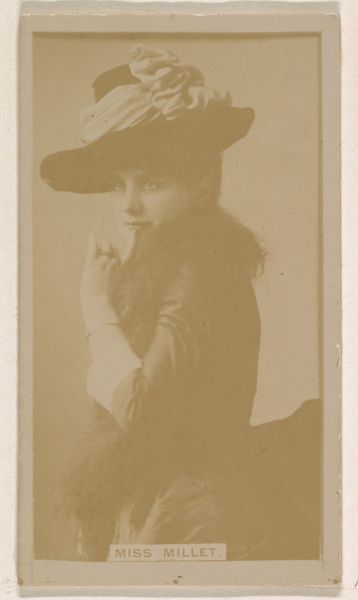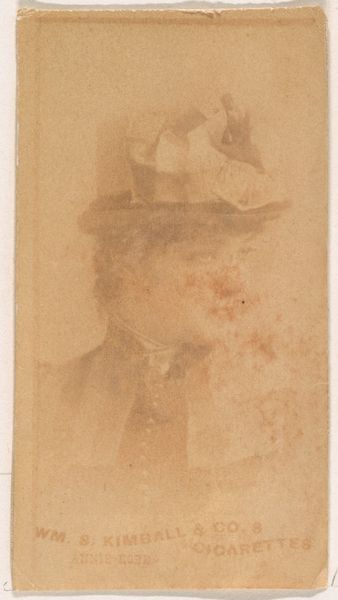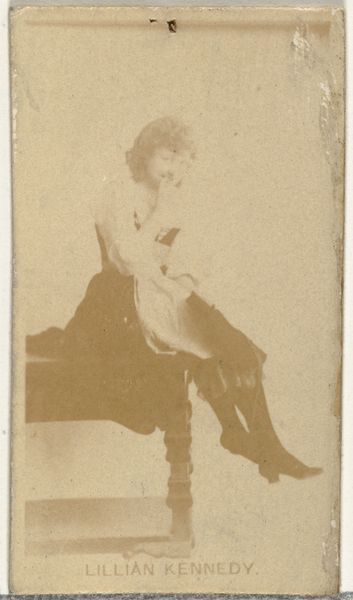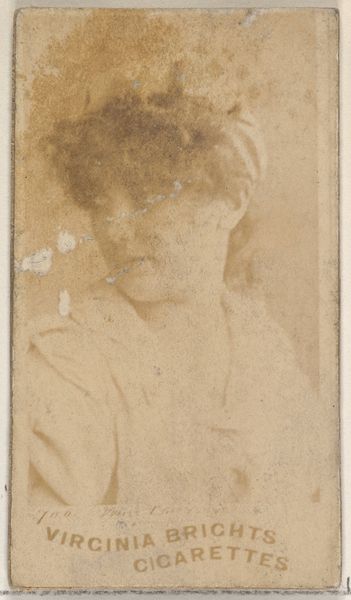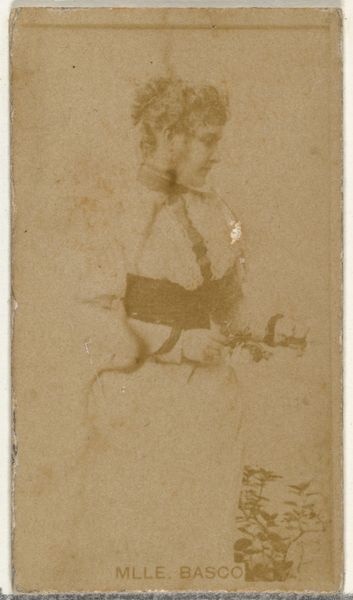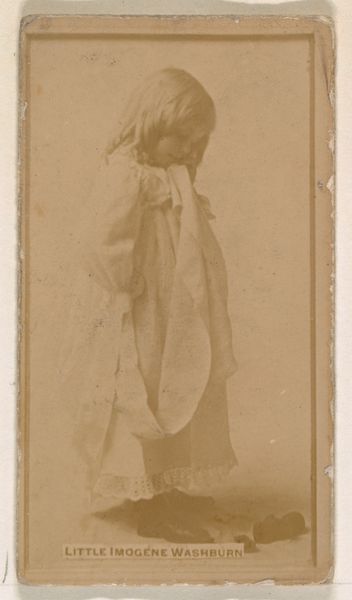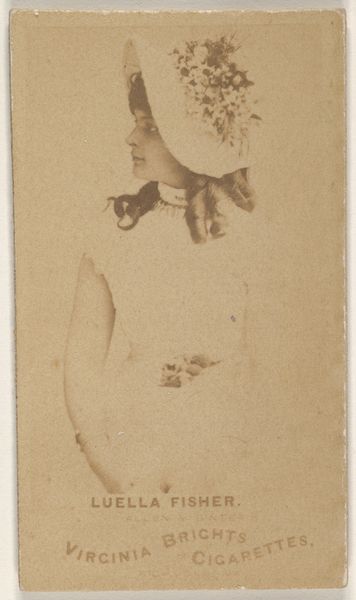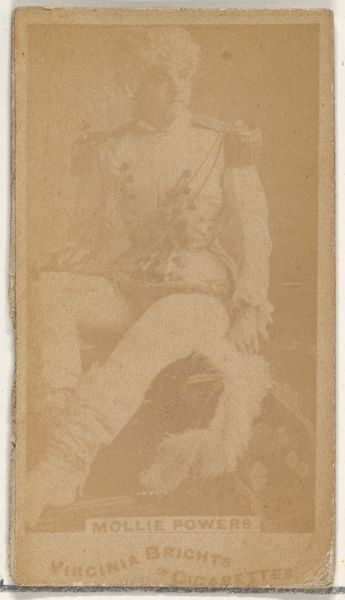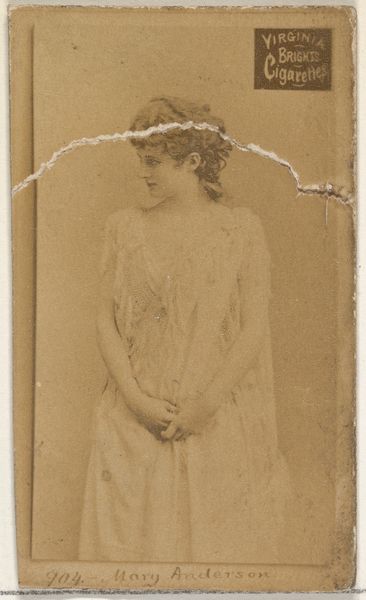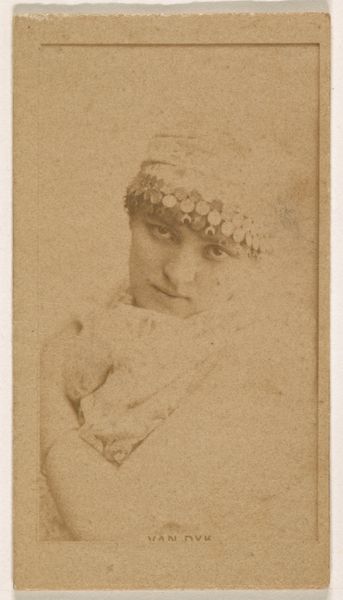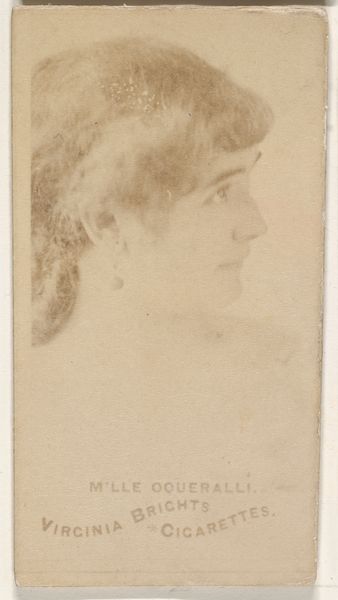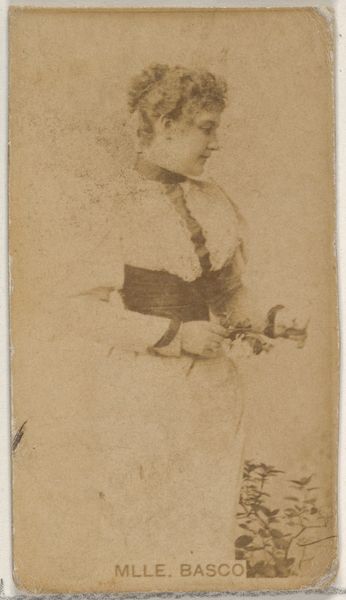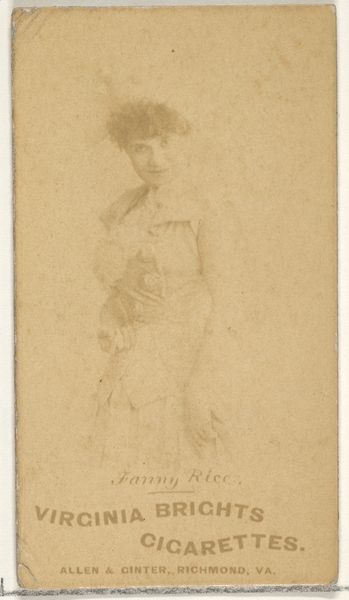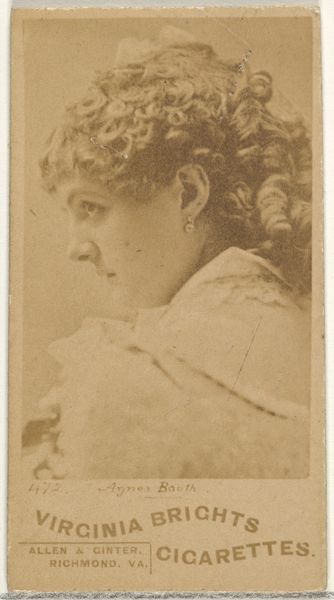
From the Actors and Actresses series (N45, Type 5) for Virginia Brights Cigarettes 1885 - 1891
0:00
0:00
drawing, print
#
portrait
#
drawing
#
toned paper
# print
#
men
Dimensions: Sheet: 2 3/4 x 1 3/8 in. (7 x 3.5 cm)
Copyright: Public Domain
Editor: Here we have a portrait from the Actors and Actresses series for Virginia Brights Cigarettes, created by Allen & Ginter between 1885 and 1891. It’s a print, a small drawing really, on toned paper. The whole thing has a sepia-toned, old-fashioned feel. How do you interpret this work? Curator: Well, looking at this image, it's impossible to ignore the blatant commercialization of identity, particularly concerning the actors and actresses depicted. Cigarette cards like these were essentially trading cards, using images of celebrities to sell products. It's crucial to question: who is benefiting from this image, and at what cost? Editor: That’s interesting. I hadn’t really considered the implications of using actors’ images to sell cigarettes. Curator: Exactly. It's not just about admiring a pretty picture; it's about interrogating the power dynamics at play. The rise of mass media and celebrity culture intersects with the marketing of addictive substances. Think about the implications for these performers, and the societal messages being reinforced about status and desirability. Editor: So, it's less about the artistic merit of the portrait itself and more about what it represents in the broader cultural context? Curator: Precisely! We must consider how images like these contributed to the normalization of smoking and the objectification of performers, particularly women, whose images were often used to promote unattainable ideals. Who controlled the narrative, and how did that shape public perception? Editor: I never would have looked at a simple cigarette card like this so critically, but now I see how much more is going on beneath the surface. Curator: It’s about peeling back the layers of representation to expose the systems of power that shaped not just art, but society as a whole. There is always a message.
Comments
No comments
Be the first to comment and join the conversation on the ultimate creative platform.
